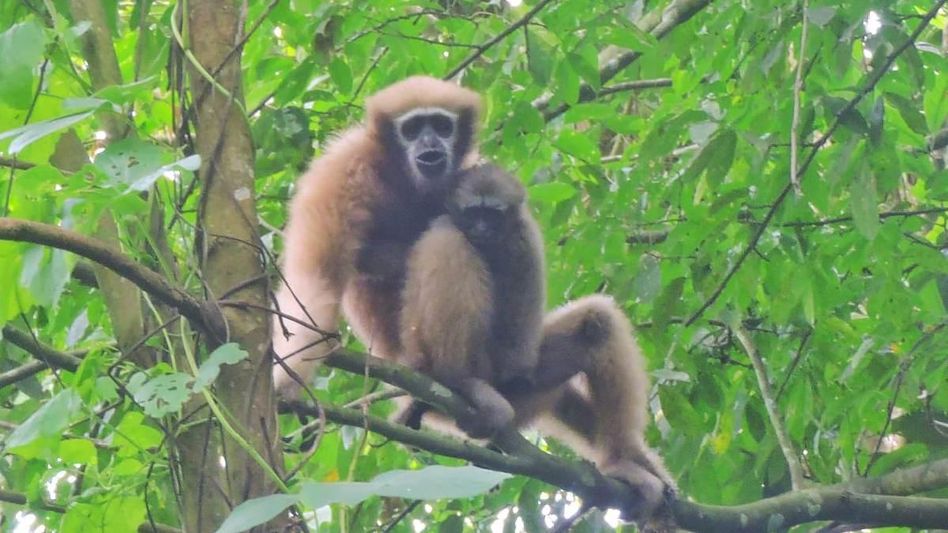Assam-based primatologist presents conservation status of Hoolock gibbons in global meet
The Hainan Institute of National Parks and Eco Foundation Global organised the event from July 7-9 focused on the conservation aspects of these apes and included a wide range of discussions about challenges, opportunities, and successes.
 Hoolock gibbons
Hoolock gibbonsAssam-based senior primatologist Dr Dilip Chetry recently attended the first meeting of the Global Gibbon Network (GGN) in Haikou, Hainan, China, an important international conference dedicated to the conservation of threatened Gibbons.
Dr Chetry, who leads the Primate Research and Conservation Division in Aaranyak, one of India's prominent conservation organizations, attended the event as a keynote speaker. He gave an account of the conservation status of the Hoolock gibbon in India especially in Northeast India before a group of scientists and primatologists from around Asia attending the conference.
The Hainan Institute of National Parks and Eco Foundation Global organised the event from July 7-9 focused on the conservation aspects of these apes and included a wide range of discussions about challenges, opportunities, and successes.
"GGN was found with a vision to safeguard and conserve a key element of Asia's unique natural heritage- the singing Gibbon and their habitats, by promoting participatory conservation policies, legislations and actions. Research-driven conservation non-profit Aaranyak is one of the founding partner organisations of the GGN with 15 partners from seven countries.", Dr Chetry said.
"Gibbons, the smallest and fastest of all the apes, live in tropical and sub-tropical forests in Southeast Asia. Like all apes, they are extremely intelligent, with distinct personalities and strong family bonds. Unfortunately, the current conservation status of gibbon species is alarming -- all 20 species are at a high risk of extinction. Since 1900, gibbon distribution and populations have declined dramatically, with only small populations in tropical rainforests.", Global Gibbon Network's official website states.
Hoolock gibbons are found only in the seven-sister states of Northeast India, making them a unique primate species. The IUCN Redlist categorizes the Western Hoolock gibbon as Endangered, while the Eastern Hoolock gibbon is listed as Vulnerable. Under the Indian (Wildlife) Protection Act 1972, western and eastern hoolock gibbons are listed on Schedule 1.
Copyright©2025 Living Media India Limited. For reprint rights: Syndications Today









